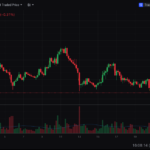Spread trading is a sophisticated strategy that appeals to traders seeking to capitalize on price differences between related assets. By focusing on the relative movement of two instruments rather than their absolute prices, spread trading offers a unique opportunity to profit in various market conditions. Let’s dive into the mechanics, benefits, and popular approaches to spread trading.
What Is Spread Trading?
Spread trading involves taking simultaneous long and short positions in two related instruments. The objective is to profit from the change in the price difference (or “spread”) between the two assets rather than their individual price movements.
How It Works:
- You buy one asset and sell another.
- The trade generates a profit if the spread moves in the direction you anticipate.
- Commonly used in futures, options, and equity markets.
For instance, in futures spread trading, you might go long on a near-month contract and short on a far-month contract of the same asset.
Key Benefits of Spread Trading
- Reduced Risk:
Since the positions hedge against one another, spread trading often involves lower risk compared to outright directional trades. - Market Neutrality:
This strategy is less affected by broader market trends, making it valuable in volatile or uncertain conditions. - Diversification:
Spread trading allows traders to explore relationships between assets across sectors, geographies, or asset classes. - Efficiency:
Margins for spread trading are typically lower than for outright positions, making it capital-efficient.
Popular Spread Trading Strategies
1. Intramarket Spreads
These involve trading two contracts of the same commodity or financial instrument with different expiration dates.
- Example: Crude oil futures—long December and short June contracts.
- Goal: Profit from seasonal price differences or changes in demand and supply expectations.
2. Intermarket Spreads
Here, traders take positions in two related markets or instruments.
- Example: Long gold futures and short silver futures.
- Goal: Exploit price correlation differences between the two markets.
3. Calendar Spreads
This strategy involves options with the same strike price but different expiration dates.
- Example: Buy a long-dated call option and sell a near-term call option.
- Goal: Capitalize on time decay or changes in volatility.
4. Commodity Spreads
Focus on price relationships between related commodities.
- Example: Long wheat futures and short corn futures.
- Goal: Benefit from shifts in agricultural demand or supply factors.
5. Equity Pair Trading
This strategy involves trading two correlated stocks.
- Example: Long Apple (AAPL) and short Microsoft (MSFT).
- Goal: Leverage price discrepancies while hedging against market-wide movements.
How to Succeed in Spread Trading
1. Research Relationships
Understand the historical correlation between the assets. Tools like correlation matrices or spread charts can help identify profitable opportunities.
2. Monitor Fundamentals
Spread trades are often driven by macroeconomic factors or seasonal trends. Stay updated on relevant news, earnings reports, and economic data.
3. Use Technical Analysis
Analyze the spread itself, using tools like moving averages, Bollinger Bands, or RSI to time entries and exits effectively.
4. Manage Risks
- Set stop-loss levels for both legs of the trade.
- Be prepared for unexpected market disruptions or low liquidity in certain instruments.
5. Leverage Technology
Use trading platforms with advanced tools for spread analysis and execution. Automation can enhance precision, especially in fast-moving markets.
Challenges in Spread Trading
- Low Liquidity:
Some spreads may involve instruments with limited trading volumes, leading to slippage. - Complex Execution:
Simultaneously managing two positions requires precision and may incur additional transaction costs. - Correlation Risks:
Relationships between assets can weaken, turning a once-reliable strategy into a losing trade.
Why Spread Trading Matters
Spread trading is a versatile strategy that appeals to both novice and experienced traders. By focusing on relationships rather than absolute price movements, it provides a fresh perspective on market dynamics. With proper research, disciplined risk management, and an understanding of market conditions, spread trading can be a powerful tool in any trader’s arsenal.
Final Thoughts Spread trading combines analytical rigor with practical execution, offering unique advantages in diverse market conditions. Whether you’re looking to hedge risk, diversify your portfolio, or exploit pricing inefficiencies, this strategy provides a structured approach to achieve your trading goals.







